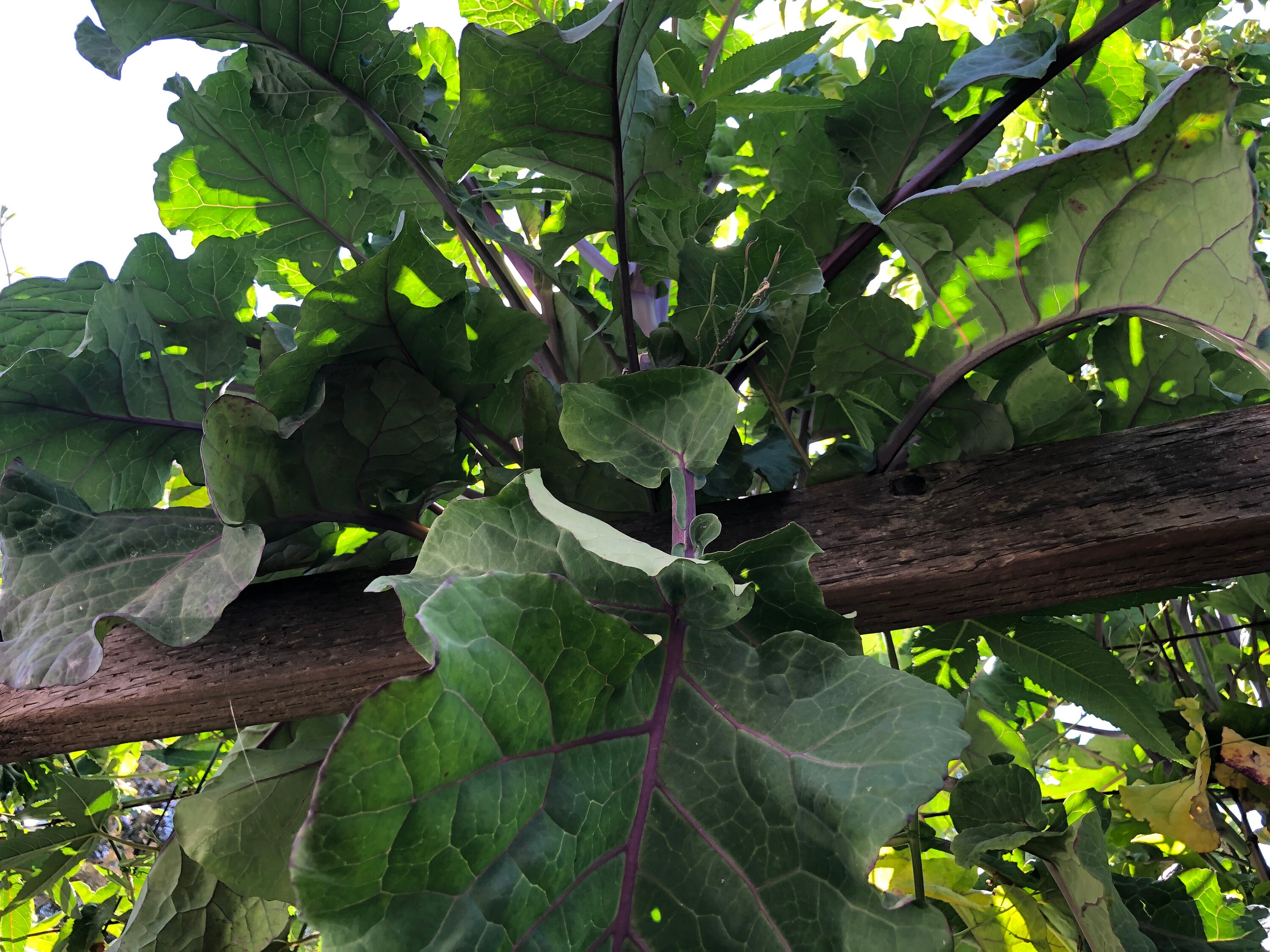

To make cuttings you should cut off a healthy, non-woody branch that will provide two or more cuttings. They rarely go to seed and when they do, the chances that a cross with another Brassica is good, for example with wild radishes. Tree collards are most easily propagated from cuttings.

Tree Collards along a fence in Willits, CA. Photo: Renata Abbade A relative of tree collards, sukuma wiki, does well in tropical areas. In this kind of environment, take cuttings at least one month before the first hard frost (or use prunings), flat them and keep them in a greenhouse to overwinter one month after the last hard frost in the spring, transplant the cuttings. They grow well in most temperate climates, although there may be approximately 75% die-back if temperature drops to 18Â☏ and stays there for any length of time. You should consider taking cuttings, planting a new bed, and getting it established, before removing them completely. In addition, tree collards contain no oxalic acid therefore, they may be eaten raw without iron being tied up.Īs perennials, tree collards can thrive for four to five years (and longer), but it is best to rotate them after three years, since they remove so much calcium from the soil. We found out that a 100-square-foot bed of tree collards can provide 4x more protein and 8x more calcium than the milk produced from a grain feed crops grown in the same area. They are super nutritious, very high in calcium, and here at Ecology Action we have been doing practical research on this wonderful veggie since 1982. Tree Collards were introduced to California, probably during the latter half of the eighteenth century, from the island of Jersey in the English Channel where they were grown to feed cattle. They grow upwards like a tree, and some plants can reach up to 12 feet tall! acephala) are the “tall cousins” in the cabbage family. You may have heard of it, or seen it at the farmers markets, but if you haven’t we are sure that you soon will came across this amazing plant! Different strains are known as Tree Kale or Walking Stick Kale, Tree Collards (Brassica oleracea var. His high-yield food raising approach is being successfully practiced in 151 countries in virtually all climates and soils where food is grown, and by organizations such as UNICEF, Save the Children, and the Peace Corps.

For the past 44 years Jeavons has devoted his time to research, develop and teach a small-scale, resource conserving agricultural method “” GROW BIOINTENSIVE®.
PURPLE TREE COLLARDS HOW TO
He is known internationally as the author of the best-selling book “ How to Grow More Vegetables””and Fruits, Nuts, Berries, Grains and Other Crops Than You Ever Thought Possible On Less Land Than You Can Imagine“, as well as author, co-author or editor of 200 other “how-to” books, booklets, topical papers and DVDs on related topics about food and sustainable soil fertility growing. John Jeavons is the Executive Director of Ecology Action, a 501(c)(3) organization headquartered in Willits, California.


 0 kommentar(er)
0 kommentar(er)
